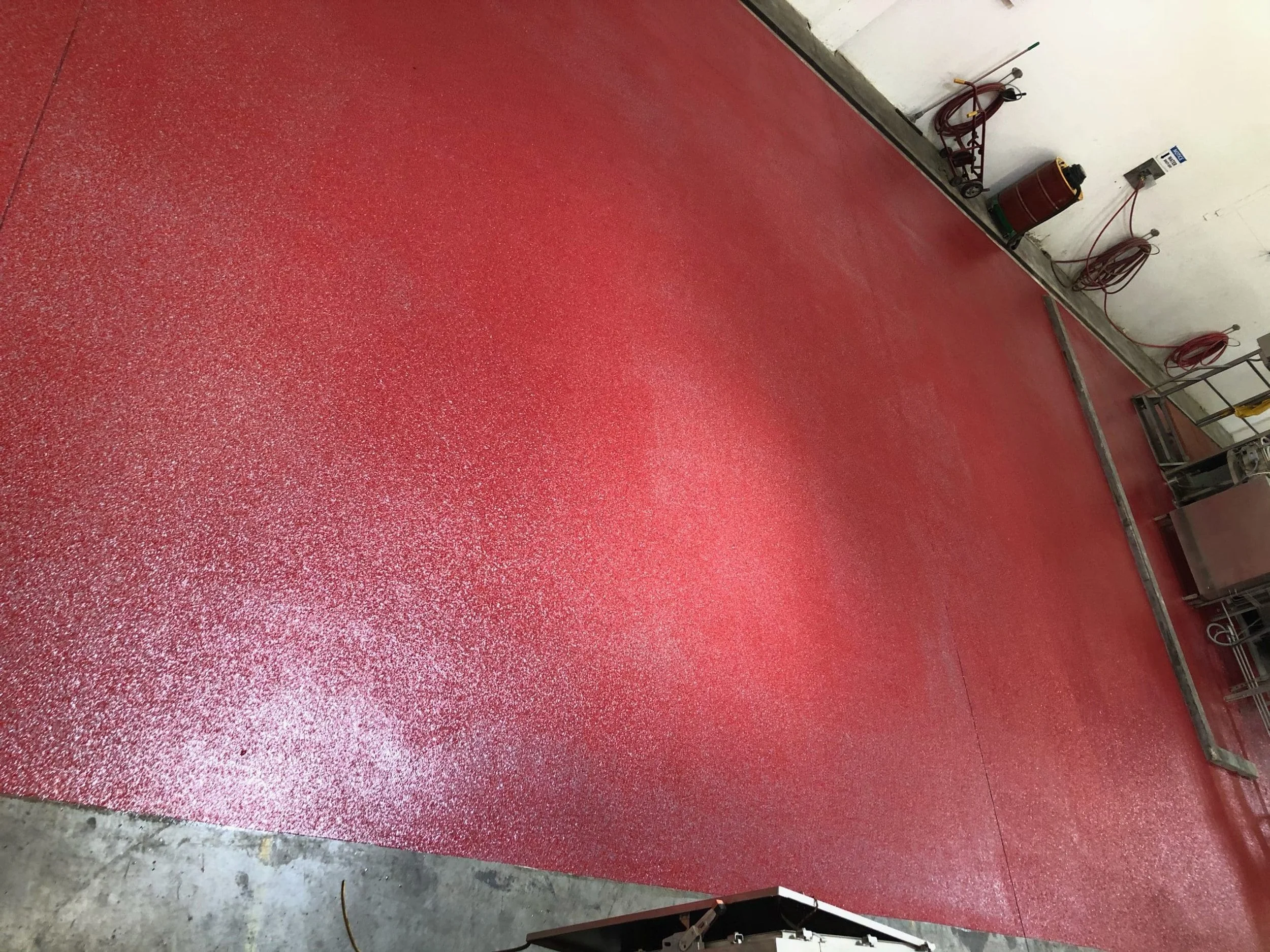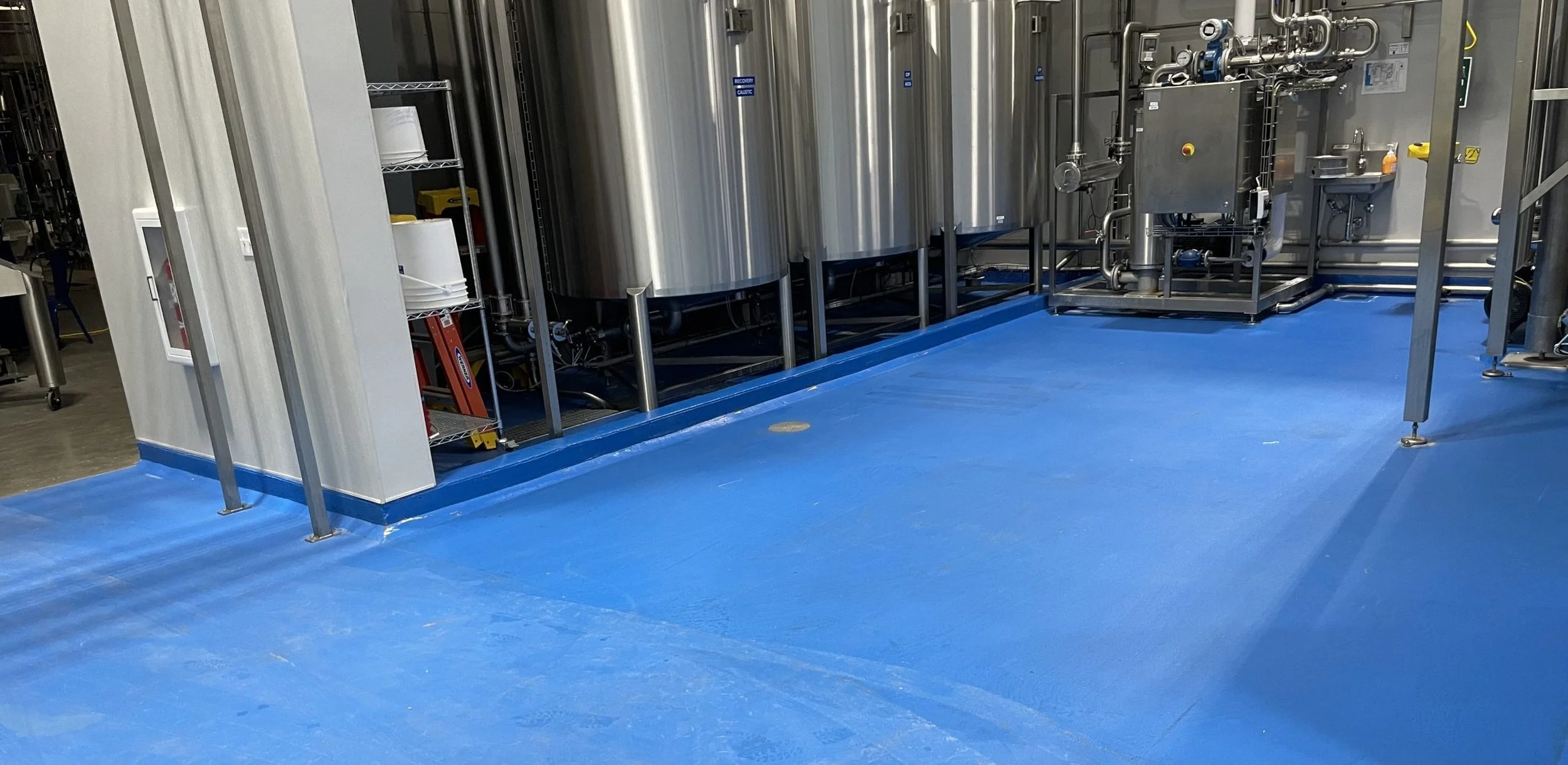
Durable. Sanitary. Industrial-Grade Protection.
Urethane cement systems are built to perform in the harshest environments — combining thermal shock resistance, chemical durability, and seamless hygiene in a single flooring solution.
What is a Urethane Cement System?
Urethane cement, also known as polyurethane concrete, is a high-performance, industrial-grade flooring system made by combining cement, water, aggregate, and urethane resin. The result is a seamless, trowel-applied system that delivers exceptional durability and chemical resistance, far beyond traditional epoxy.
Unlike standard coatings, urethane cement is designed to bond aggressively to concrete while expanding and contracting at the same rate — making it ideal for environments with thermal cycling, high moisture, or aggressive cleaning protocols.
It can be installed at thicknesses of 1/4" to 3/8" depending on use, and optionally broadcast with quartz or sealed with a urethane topcoat for additional protection.
Why chose a Urethane Cement System?
Thermal Shock Resistance
Handles extreme temperature changes — hot water, steam, or freezer conditions — without cracking or delaminating.Moisture Tolerant
Can be installed on damp concrete and resists vapor drive, making it ideal for new construction or high-moisture slabs.Chemical & Acid Resistance
Outperforms epoxy in environments exposed to harsh cleaners, food acids, grease, and solvents.Heavy-Duty Durability
Holds up under forklifts, rolling carts, impact, and abrasion in high-traffic settings.Hygienic & Easy to Clean
Seamless, nonporous surface resists bacterial growth and supports sanitation protocols — perfect for food and pharma.Long-Term Value
While more expensive up front, urethane cement systems often outlast traditional coatings by 2–3 times, saving money over the life of the floor.
Best Applications
We install urethane cement systems using a precise, multi-step approach that ensures long-term durability, chemical resistance, and hygienic performance — even in the most demanding conditions.
Commercial & Industrial Use
Commercial kitchens & food processing plants
Breweries & beverage production facilities
Pharmaceutical manufacturing
Cold storage & walk-in freezers
Chemical processing areas
Warehouses with heavy forklift traffic
Our Process (How We Install Urethane Cement Systems)
1. Mechanical Surface Preparation
We begin by mechanically preparing the concrete using industrial grinders or shot blasters to achieve the proper Concrete Surface Profile (CSP 3 to 5), depending on system thickness. This removes existing coatings, weak surface layers, and contamination while opening the pores of the slab for optimal adhesion. Detailed edge work is performed using hand grinders to ensure full bond at transitions and perimeters.
2. Crack & Joint Repair
All visible cracks, spalls, and control joints are addressed before coating. We fill and patch imperfections using high-strength epoxy or polyurea fillers. Active joints may be saw-cut and honored or treated based on movement requirements. This step restores the integrity of the slab and helps prevent future telegraphing through the flooring system.
3. Priming (If Required)
While urethane cement can bond directly to clean concrete, certain substrates — such as highly porous or deteriorated slabs — may benefit from a specialized primer. Priming helps unify the surface, improves adhesion, and seals micro-porosity that could lead to bubbling or pinholes. This is assessed on a per-project basis.
4. Urethane Cement Slurry Application
The urethane cement base coat is mixed on-site and applied at a nominal 1/4" thickness using a screed or gauge rake. It is then spike-rolled to release trapped air and achieve a consistent surface profile. This layer forms the core of the system, providing compressive strength, thermal shock resistance, and chemical durability far beyond traditional coatings.
5. Optional Quartz Broadcast
If the space requires increased slip resistance or added surface texture, we broadcast quartz aggregate into the wet urethane cement until full rejection. This creates a highly durable surface texture that can meet safety standards in wet or greasy environments. The excess quartz is vacuumed after cure.
6. Urethane or Polyaspartic Topcoat
After curing, the floor is cleaned and inspected before applying a high-performance topcoat. We typically use a chemical- and UV-resistant urethane or polyaspartic finish that enhances stain resistance, gloss retention, and cleanability. This final layer also protects the broadcast texture, locking in the system for long-term performance.

Built for Abuse. Installed to Last.

